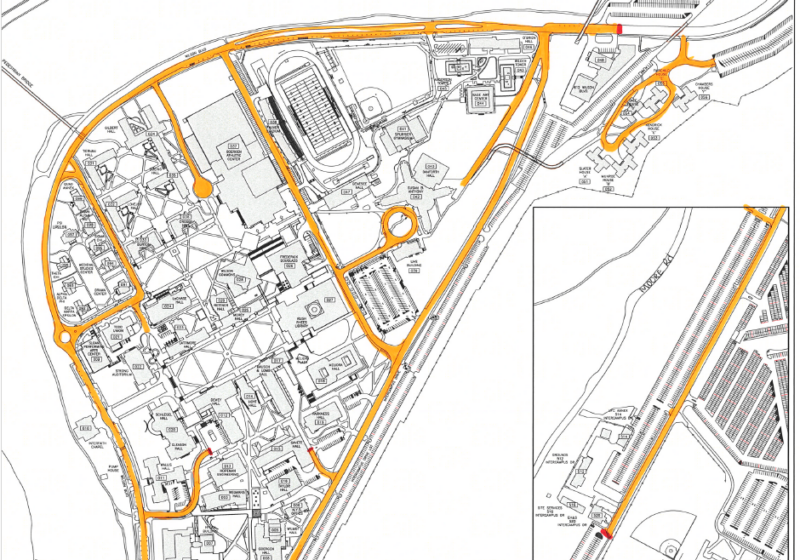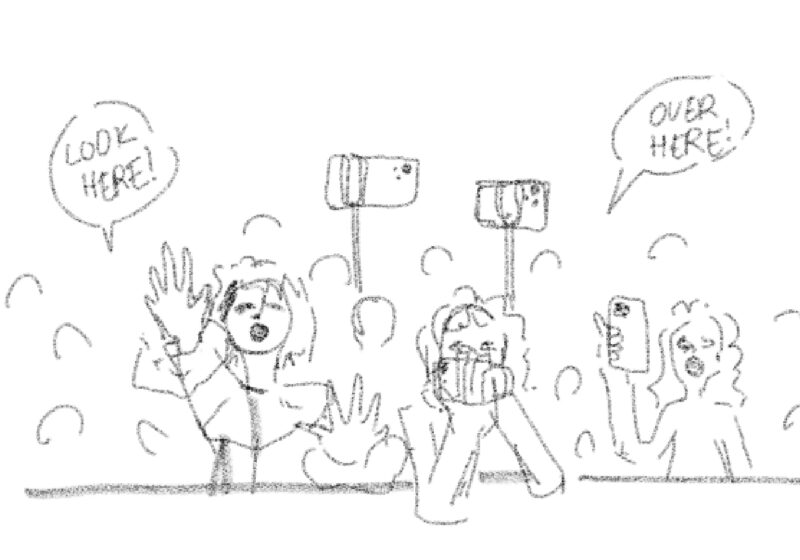Culture can be defined as the understanding of particular social norms among a group of individuals. As people apply the word to different spheres of everyday life, more definitive separations are made between ‘us” and ‘the other.”
Today, we live in a world where a simple tap on a mouse pad can connect two individuals from completely opposite spheres of the world within two and a half seconds thanks to our lovely high-speed Internet access. There is a constant exchange of cultural information at a magnitude that far exceeds past cultural exchange endeavors. It is the manifestation of globalization. Groups are continuously being influenced by others, causing the black and white separations of the past to become ever more gray.
This ‘cultural blending” can be exhibited when comparing the music of different cultures, an idea that lays the foundation for the World Music Series and Music and Globalization Symposium, which premiered this past Friday. The opening concert featured the African Alchemies/Echo Ensemble and Mbira Masters of Zimbabwe.
The mbira is a 22-key instrument that is plucked to produce a sound that is placed within a halved calabash gourd, known as a deze, to amplify the sound.
The concerts’ intent was to inform the audience that even though the Western classical style seems to be at the polar opposite end of the musical spectrum to the traditional Zimbabwean mbira music of the Shona people, there are indeed similarities.
The concert began with African Alchemies/Echo Ensemble, comprised of three instrumental virtuosos in the musical world. The violinist within the ensemble was Jennifer Choi, a current graduate student at The Julliard School of Music and past recipient of the Artist International Award. The featured cellist was Christopher Gross, an Oberlin College alumnus and current member of the Teaching Artist faculty at the New York Philharmonic Orchestra. The pianist was Thomas Rosenkranz, an Artistic Ambassador, according to the United States Department of State, and staff member at Bowling Green State University.
The ensemble played a piece entitled ‘Second Piano Trio in Five Movements,” arranged by Martin Scherzinger, a previous professor at institutions such as the Eastman School of Music, Princeton University and Columbia University, who is currently researching the African origins of music. The movements varied in their rhythmic style, alternating between slow, fast and very fast tempos. At times, the music was upbeat and lively, but at other moments, the instrumentalists performed pieces that were calming.
However, the true feature of the ensemble was an improvisation piece featuring Scherzinger and Rosenkranz on piano that incorporated the hosho, a traditional Shona rattle made from a gourd with seeds inside, played by both Choi and Gross. Eventually, only Scherzinger and Rosenkranz were left on the stage, each clapping to the beat of their own drum until, after careful listening, the two rhythms eventually morphed into one. It was a way to display the influences of Zimbabwean mbira music on a more Western classical piece.
After a brief intermission, the audience was exposed to the mbira music of Zimbabwe, played by two world-renowned mbira players, Cosmos Magaya and Beauler Dyoko. Magaya has participated in numerous international tours in the United States and Europe. He has taught mbira master classes at Duke University, Stanford University and Northwestern University and has been doing anthropological research on traditional Shona music. Dyoko, the first female mbira recording artist and known as the ‘Queen of Mbira Music,” serves as lead singer of The Black Souls, an mbira ensemble. Like Magaya, Dyoko has also participated in mbira tours around the globe. She has written original compositions to spread AIDS awareness.
Mbira music can be cyclical, showing similarities to the Western classical minimalist movement. As was heard when Magaya and Dyoko were playing the different pieces, mbira music consists of two different parts: the kushaura the simpler part, and the kutsinhira the part that generally has added complexity.
At times, the hosho was incorporated into the piece to lay a foundation for the rhythm of the song. The pieces played by Magaya and Dyoko ranged from topics dealing with a jealous woman to one of Dyoko’s original songs about AIDS. She sang lead in all of the songs, and Magaya was her back-up singer.
The concert was a moment where one musical world was exposed and infused into the musical world of another. Will more classical compositions be produced incorporating techniques from the kushaura and the kutsinhira?
Only time shall tell but as one culture exposes itself to another, a new cultural exchange emerges, and we come yet one step closer to creating a global culture.
Massie is a member of the class of 2011.





